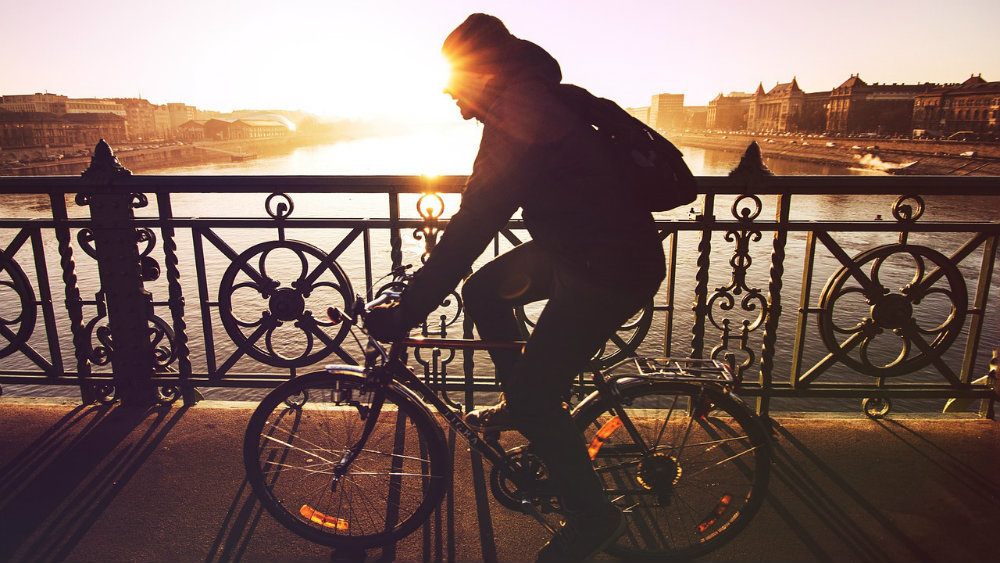Geoff Maxted warns that you won’t see him coming . . .
As an automotive writer I take my driving seriously. I also take the driving of other people seriously. It has become necessary for me to take the hard line view that driving standards are not what they were. My experience obviously is here in the UK but I expect that careless or just plain bad driving is a global issue. I have become a righteous and bold knight of the road, smiting with furious anger (in my mind) those that transgress the rules as I interpret them, and that is how I have carried on.
Until I made a mistake.
Nearly Departed
I had driven on business for several hours on mixed roads, including some lovely, winding, and typically British country lanes. Near the end of my long journey, I approached a crossroads, turned a blind bend and came face to face with a low autumn sun that temporarily blinded me.
I misjudged the junction and was only alerted by a blare of car horns. This time I got away with it, but it gave me two salutary lessons: that being tired means a lack of alertness and that winter driving conditions are very different from those of summer.
We become accustomed to the time of year. Even in Britain where a Californian summer is but a hot, fetid dream, we do occasionally get some decent weather and we forget that only too soon, the dark nights will draw in and engulf us like a Dementor’s shadow.

In The Northern Hemisphere
During October, almost anywhere in the Northern Hemisphere, we have reached the stage where a setting sun threatens to dazzle us when we are on the way home from work or play. With sun dazzle a factor in more deaths than rain, sleet, snow, and fog in three of the past five years here in good old Blighty, we have good reason to fear it.
Low sun in the morning also poses a threat but the early evening is particularly dangerous as school-aged children head home and joggers, cyclists, and pedestrians go out to exercise and enjoy the fading evening light, until that is when we set back the clocks and are plunged into winter’s embrace. Is it any wonder then that 82 percent of UK drivers, peaking at four percent more further up North in Scotland, dislike driving in the autumn because of the threat of sun glare.
Sometimes there is a case for cloudy skies.
London Rush Hour
In our bustling metropolis of London, 68 percent of drivers in the evening city rush hour often encounter lunatic cyclists and inattentive pedestrians in the road, usually with their faces buried in the screens of smartphones. The risk of regularly coming across cyclists while driving home is lower outside of the cities but they are still out there nonetheless.
Londoners say they are least troubled by sun dazzle while driving in the autumn because they are surrounded by tall buildings. However, in built-up areas, buildings may block direct sunlight but gaps can create sudden dazzle while east to west roads can leave drivers locked into facing sun glare for quite some time.

Statistics Never Lie
Statistics show that across the UK during 2015, there were 2,575 road accidents where sun dazzle was a contributory factor. Each year, it is involved in 20-25 driving fatalities and has been more deadly as a cause of road deaths than any other weather conditions in the last half-decade.
That’s a shocker because we associate sun much more positively than we do bad weather.
Further; joggers, dog walkers, workers returning home on foot, and other pedestrians walking with their backs to vehicles are almost twice as likely to be killed or seriously injured in road accidents. Research from official pedestrian casualty statistics show that more than 10 percent of the 5,566 pedestrians killed or seriously injured in the last decade when in the road were walking or running with their backs to traffic.
This compares with half that number of the casualties who were facing oncoming cars. A driver is still blinded by the low sun but at least those in danger can see it coming. As well as the benefit of facing oncoming traffic when walking, pedestrians may also get another advanced warning of a dangerous situation. If they cast a long shadow in front of them it may help a driver see them better.

Three Golden Rules For Drivers
Number one, keep your windscreen really clean inside and out. Number two, slow down immediately when affected and use the sun visors. And number three, anticipate the effects of glare on you and other drivers; the sun may appear suddenly from behind trees, buildings, and other objects. European research also shows that the rate of head-on crashes involving heavy trucks nearly quadruples in twilight conditions. Upwards of 40 percent of head-on accidents with cars happen when the sun is low in the sky. They also tend to happen on rural roads more than main highways.
By obeying these rules, you will be safer at this time of year. Be especially aware if you’re living in or visiting the UK and driving: we do it on the RIGHT-hand side of the road. Step out of line and you may encounter an enraged Englishman bearing down on you and – be warned – you won’t see me until the last minute because I’ll come at you out of the low autumn sun.
Geoff Maxted is a motoring writer, photographer, and author of our Letter From The UK series. Follow his work on Twitter: @DriveWrite
Cover Photo: Skitterphoto



